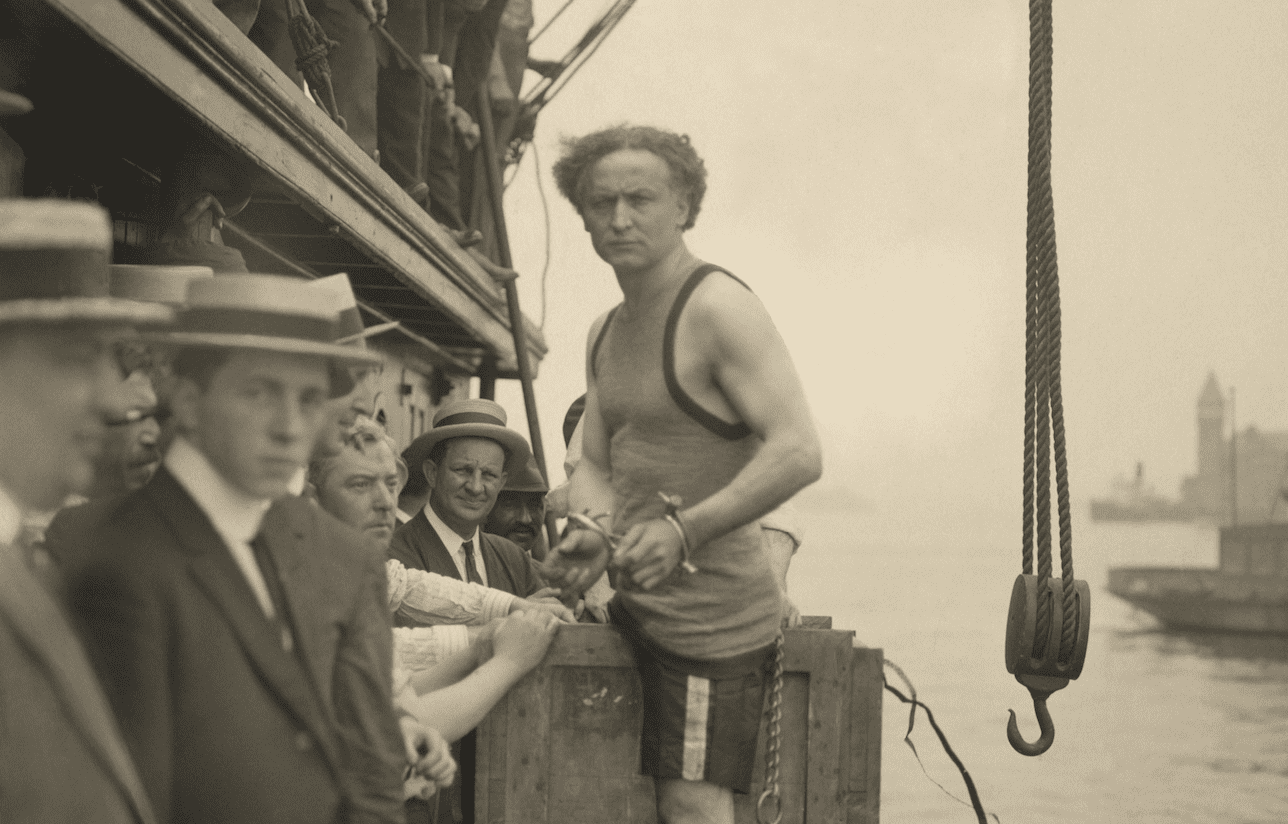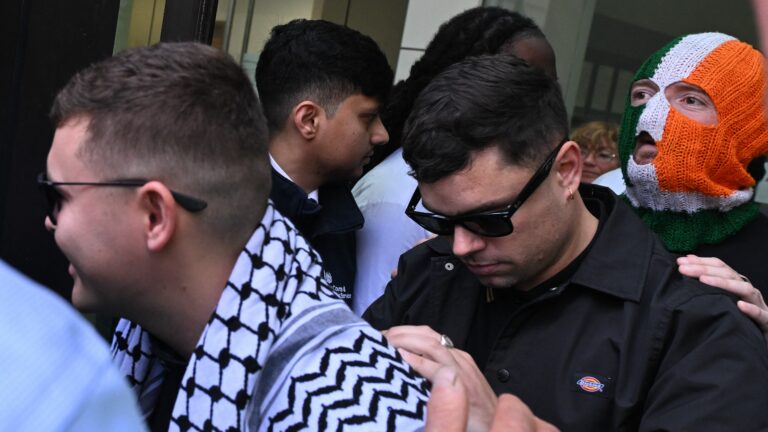Harry Houdini mesmerized audiences for more than 30 years with his spectacular exploits and superhuman stamina. The Hungarian-born stunt performer escaped a sealed milk can filled with water, leaped off bridges while chained and wearing leg irons, and created a ‘Chinese Water Torture Cell’ in which he was submerged and hanging upside down by his ankles. The thrilling escapes typically entailed some cunning and deception, but they were also laden with real danger. Houdini came dangerously close to death in 1915 while performing a trick in which he was bound and buried beneath six feet of soil.
Houdini earned a living by pulling off the seemingly impossible, which further added to the mystique surrounding the circumstances of his passing in 1926. On 24 October, the 52-year-old gave a performance in front of a large crowd in Detroit but was afterwards rushed to the hospital with what appeared to be appendicitis. On Halloween night a week later, he passed away, leaving throngs of his admirers perplexed. The abrupt loss of the man ‘who so often had seemed to thousands to be cheating the very jaws of death’ was described in an obituary in The New York Times as shocking.
His Final Performance
The bizarre chain of events that led to Houdini’s demise began on 11 October 1926. The magician was injured by a malfunctioning apparatus while being shackled inside his Chinese Water Torture Cell during a performance in Albany, New York. He carried on with the stunt with a limp, but it was later discovered that he had broken his left ankle.
Houdini continued his tour despite physicians’ advice to the contrary and made his way to Montreal, Canada where he spoke at McGill University. On 22 October, just a few days later, he welcomed a few McGill students to his dressing room at the Princess Theatre. The magician sat down on a couch as the group talked because his broken ankle was still troubling him. Houdini was eventually approached by a student named J. Gordon Whitehead, who inquired about the magician’s alleged boast that he could withstand powerful abdominal blows. Sam Smilovitz, a witness, claimed that when Houdini acknowledged the rumours were real, Whitehead suddenly struck him in the stomach with ‘four or five tremendously strong, purposeful, well-directed strikes.’
Houdini had little time to get ready for the punches, which seemed to cause him a lot of agony, as he was still reclining on the couch. Houdini dismissed the occurrence, but later that evening he started to feel discomfort and cramping in his stomach. The following day, as he boarded an overnight train for Detroit to begin a new run of performances, his health only got worse. The magician experienced excruciating stomach pain, tiredness, and cold chills, and his body temperature shot up to 104 degrees. Houdini was told to go to the hospital by a doctor who thought he had appendicitis, but the magician insisted on doing his opening night show at the Garrick Theatre instead. Then, after the final curtain, he collapsed after struggling through his routine. It would be Houdini’s final performance. He was taken to a hospital in Detroit that same evening and prepared for surgery. His appendix, which was discovered to have ruptured a few days earlier, was safely removed by doctors, but the abscess formed around the burst appendix had already contaminated his internal organs. The magician was given a bleak prognosis and passed away on 31 October, with his wife Bess and his two brothers by his side.
Peritonitis brought on by an appendix rupture was reported as the official cause of Houdini’s death. The magician’s medical professionals were adamant at the time that the ailment was a direct result of the beating J. Gordon Whitehead gave him during their backstage meeting in Montreal. Even though these ‘traumatic appendicitis’ cases are extremely uncommon—one study only discovered a few dozen over a nearly 20-year period—the diagnosis was universally accepted in 1926. In fact, Houdini’s life insurance company was compelled to provide his widow with double indemnity.
Doubts Surrounding His Death
On 4 November 1926, Houdini was laid to rest in Queens, but stories about his peculiar demise have lingered ever since. Theories sometimes centre on the magician’s problematic association with Spiritualism, a false religion whose followers formerly said that séances and mediums could help people establish contact with the dead. Being a natural sceptic, Houdini spent a large portion of the 1920s trying to disprove the Spiritualists’ claims and expose its top mediums. Although the crusade cost him millions of dollars in lawsuits and made him many enemies, he still showed no indication of stopping at the time of his death. He had spoken in favour of a bill to criminalize fortune telling in Washington, D.C.
Although the exact cause of Houdini’s death may never be known, the majority of academics tend to disregard the murder ideas as mere conjecture. They are more concerned with discovering if Houdini’s ruptured appendix was related in any way to the punches to his stomach that he suffered a few days before. Although the data suggests that such an occurrence is in fact possible, many believe that Whitehead’s punches may have just worsened an already existing condition. The theory holds that by the time the magician eventually sought medical attention, it was too late.
It’s interesting to note that none other than Houdini himself is the most sought-after source of information regarding his passing. The magician promised his wife Bess that he would try to speak with her from beyond the grave in what amounted to his ultimate test of the Spiritualists’ claims. After ten years of holding a yearly ‘Houdini séance,’ Bess gave up the search in 1936. Since then, admirers and other magicians have made the séance a Halloween ritual, but the ghost of the great Houdini has remained silent.
His Legacy
To this day, Houdini is still widely celebrated and respected all around the world. Young people who want to try their hands at magic are first introduced to his name, and his spectacular stunts and bravery inspired millions around the globe. Many escape artists who came after him expressed that they were largely inspired by and learned a lot from his tricks. Perhaps the most well-known artist today who seems to be following in Houdini’s footsteps is David Blaine, who dares himself to attempt incredible and seemingly impossible stunts that also put his life in danger.
Movies have been directed, books have been written, and his art has become a topic of many academic studies since Houdini died. In Hungary, he is honoured by the House of Houdini in Budapest where his original handcuffs, personal letters and other unique exhibits are displayed. The museum also boasts original props from the latest ‘HOUDINI’ film featuring Oscar-winning actor Adrien Brody.
Related Article:








